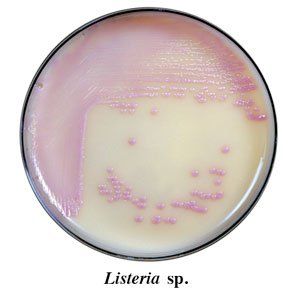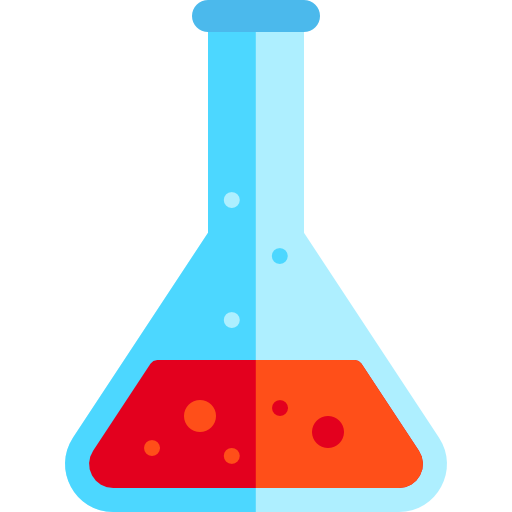R & F® Listeria sp. Chromogenic Plating Medium
Request a Quote


Selective/Differential Medium For Detecting Nonpathogenic & Pathogenic As Listeria sp.
Colony Appearance
Presumptive positive colonies of all Listeria sp. appear as pink convex colonies 1.0 to 2.0 mm diameter with or without a precipitate after 42-48 h incubation at 35°C. Enterococcus and Bacillus species, either do not grow or have a scant growth with pinpoint clear colonies. Gram (-)s, other Gram (+)s and yeasts are inhibited.

Mechanism
This medium was developed to replace MOX (USDA) and/or LPM (FDA) for identifying both nonpathogenic and pathogenic Listeria species, especially in environmental samples from plants producing ready-to-eat foods. The Listeria sp. chromogenic plating medium contains the chromogens Salmon-β-D-glucopyranoside and Magenta-β-D-glucopyranoside which detects the β-glucosidase enzyme found in all Listeria species. By using the correct concentrations of Salmon-β-D-glucopyranoside and Magenta-β-D-glucopyranoside in the medium all Listeria produce pink colored colonies against an opaque white background (titanium oxide).

Industry Types
Fish, poultry, meat, dairy, bakery and ready-to-eat foods and environmental testing in these food processing facilities
See Product Brochure, Use Protocol, SDS, Certificate of Analysis and Medium Preparation for more information about our medium.

Advantages/Benefits
1. The highly differential medium is based on specific chromogenic substrates in the plating medium that simultaneously identifies both nonpathogenic and pathogenic Listeria species as pink colored colonies on a single plate in 42-48 hours at 35°C.
2. With more than 50 Listeria species tested, all produced pink convex, 1.0 to 2.0 mm in diameter colonies after 48 hours (100% sensitivity – no false negatives).
3. Since our chromogenic substrates are insoluble the color stays within the colony and does not diffuse out into the agar like other media.
4. Enterococcus sp. and Bacillus sp. either do not grow or have scant growth, pinpoint clear colonies – no false positives from these two genera.
5. The agar surface of the plates has an opaque white background that facilitates differentiation of the pink colored Listeria species from the non-Listeria bacteria.
6. Competitors’ non-chromogenic agars (MOX and LPM) which depend on esculinase as the differential trait allows many Bacillus sp. and Enterococcus sp. to grow as black colored colonies producing false positives and resulting in additional expensive tests and labor costs.
7. The price of our medium is comparable to MOX and LPM.
8. The shelf life of prepared plates remains stable for at least 60 days, stored in the dark at 2-8°C. One bottle of plating medium powder and one box of supplements will make approximately 365 plates.

Ordering Information
M-1450
R & F® Listeria sp. Chromogenic Detection System (500 g Bottle of Powder & one Supplement Box – Makes 360-370 Plates)
M-1400
R & F® Listeria sp. Chromogenic Plating Medium (500 g Bottle)
M-1410
R & F® Listeria sp. Supplement for Plating Medium (1 Box)
M-1460
R & F® Listeria sp. Chromogenic Prepared Plate (Minimum Order of 20 Plates – Shelf life is 60 Days)
